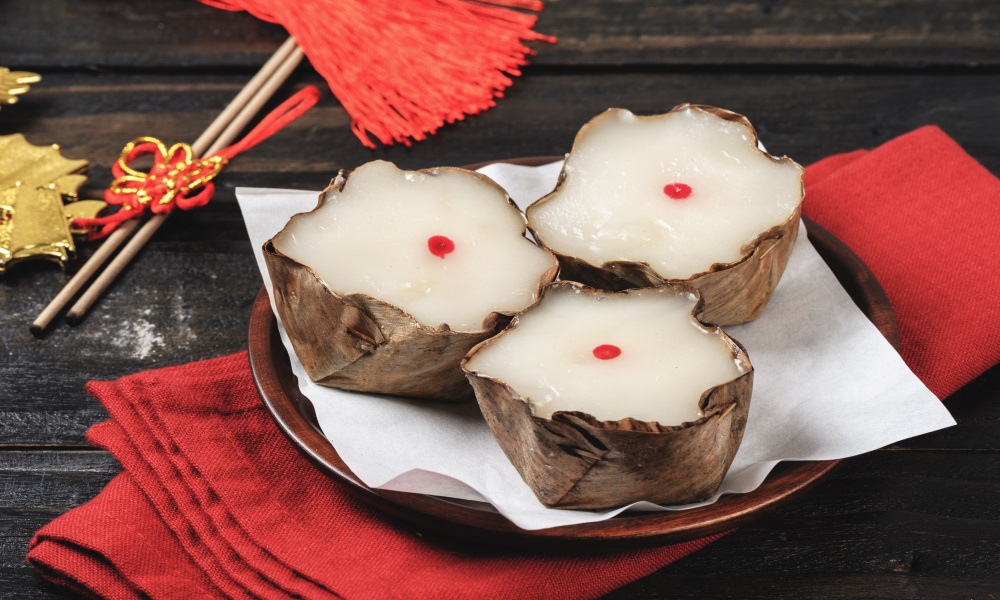
Chinese New Year, also known as the Spring Festival, is one of the most important and widely celebrated festivals in Chinese culture.
This festive occasion, which falls between late January and mid-February, marks the beginning of the lunar New Year. It is a time for family reunions, vibrant parades, and, of course, delicious food.
While savory dishes play a significant role in Chinese New Year feasts, it’s the delightful array of seasonal desserts that truly add sweetness to the celebration.
In this article, we will explore the rich tradition of Chinese New Year desserts and introduce you to some delectable treats to help you ring in the New Year with a sweet touch.
Symbolism in Chinese New Year Desserts
Before diving into the delightful desserts, it’s essential to understand the symbolic significance of these sweet treats.
In Chinese culture, every element of the New Year celebration has a deeper meaning, and desserts are no exception. Here are some common symbols associated with these sweets:
- Sweetness: Sweetness represents a wish for a sweet and harmonious life in the coming year.
- Prosperity: Many desserts are made in shapes that resemble ancient Chinese coins or ingots to symbolize wealth and abundance.
- Reunion: The round shape of many desserts signifies the reunion of family and friends during this special time.
- Good Luck: Red is a dominant color in Chinese New Year desserts, as it symbolizes good luck and wards off evil spirits.
- Longevity: Some desserts are prepared in the shape of symbols that represent long life, such as peaches or the character for “longevity.”
Traditional Chinese New Year Desserts
Let’s begin by exploring some of the traditional Chinese New Year desserts that have been passed down through generations:
Nian Gao (Sticky Rice Cake)
Nian Gao, also known as “New Year cake” or “rice cake,” is a must-have dessert for Chinese New Year.
It is made from glutinous rice and is incredibly sticky in texture. The name “Nian Gao” sounds like “higher year” in Chinese, suggesting a desire for improvement and advancement in the coming year.
This dessert can be prepared in various ways, such as steamed, pan-fried, or deep-fried, and may be sweet or savory.
The sweet version often includes brown sugar, making it a delightful treat with a hint of caramelization.
Fa Gao (Prosperity Cake)
Fa Gao, also known as “prosperity cake” or “flower cake,” is another symbolic dessert for Chinese New Year. These steamed sponge cakes come in vibrant colors, with red being the most popular choice for its association with good luck.
They are often topped with designs or Chinese characters that wish for prosperity and good fortune in the upcoming year.
Tangyuan (Sweet Rice Balls)
Tangyuan, also called “yuanxiao,” are small glutinous rice balls traditionally filled with sweet fillings like sesame paste, red bean paste, or peanuts.
These round dumplings symbolize family reunion and are traditionally served during the Lantern Festival, which marks the end of the Chinese New Year celebrations. They are cooked in a sweet broth and are enjoyed for their sweet and chewy texture.
Osmanthus Cake
Osmanthus cake, or “guìhuā gāo,” is a delicate dessert made from glutinous rice flour and sweet-scented osmanthus flowers. Osmanthus is associated with good luck and happiness in Chinese culture.
The cake has a subtly floral flavor and is often shaped like small golden cubes. It’s a fragrant and visually appealing dessert that is popular during the Chinese New Year season.
Regional Variations
The diversity of China’s regional cuisines adds a fascinating dimension to Chinese New Year desserts. Different regions have their own unique sweets that reflect local traditions and ingredients. Here are a few regional variations:
Eight Treasures Rice Pudding (Babaofan)
Originating from Sichuan, Eight Treasures Rice Pudding is a delightful dessert made with glutinous rice and an assortment of sweet and savory toppings, including candied fruits, nuts, and beans.
Each of the “eight treasures” represents a different wish for the coming year, such as wealth, happiness, and longevity. The dessert is traditionally served in a bowl and is as visually appealing as it is delicious.
Teochew Yam Paste (Orh Nee)
Hailing from the Teochew community in Southeast Asia, Orh Nee is a dessert made from mashed yam and sugar.
It is often served with a drizzle of coconut milk and topped with gingko nuts. Orh Nee is cherished for its velvety texture and sweet, earthy flavor, making it a perfect ending to a Chinese New Year meal.
Sweet Rice Cake (Tangtuan)
In northern China, sweet rice cakes called “tangtuan” are a popular choice for celebrating the New Year. These are similar to the sweet glutinous rice balls mentioned earlier but are larger and served in a clear, sweet soup.
The round shape and pronunciation of “tangtuan” symbolize completeness and unity, making them a fitting dessert for family gatherings.
Modern Twists on Traditional Desserts
While the traditional desserts remain beloved classics, modern interpretations of Chinese New Year sweets have emerged, catering to contemporary tastes and aesthetics.
These desserts often blend traditional flavors with innovative presentations, creating a delightful fusion of old and new.
Matcha Nian Gao
For those who enjoy a touch of green tea flavor, Matcha Nian Gao is a delightful twist on the traditional sticky rice cake.
Matcha powder is incorporated into the rice cake, adding a subtle bitterness that balances the sweetness of the cake. The vibrant green color also makes it a visually striking dessert.
Red Bean and Black Sesame Tangyuan
While the classic tangyuan fillings are beloved, many modern variations feature ingredients like red bean and black sesame.
These fillings offer a richer, nuttier flavor profile and complement the chewy texture of the rice balls. The contrasting colors of the fillings also make the tangyuan visually appealing.
Mandarin Orange Macarons
Macarons are a popular treat worldwide, and they have found their way into Chinese New Year celebrations.
Mandarin orange macarons, with their vibrant orange color and citrusy flavor, are a delightful addition to the dessert table. The citrus notes add a refreshing contrast to the richness of other traditional sweets.
Desserts with a Twist
In addition to modern interpretations of traditional desserts, some creative Chinese New Year sweets take inspiration from other cuisines or infuse global flavors into the celebration. These desserts add a unique twist to the festivities.
Pineapple Tarts
Pineapple tarts, popular in Malaysia and Singapore, are often enjoyed during Chinese New Year. These bite-sized pastries consist of a crumbly, buttery crust filled with sweet and tangy pineapple jam.
The pineapple’s golden color symbolizes wealth and prosperity, making these tarts a beloved treat during the holiday.
Mandarin Sorbet
Mandarin sorbet is a refreshing dessert option that pays homage to the Chinese tradition of exchanging mandarin oranges for good fortune.
The sorbet offers a zesty and cooling experience after a hearty New Year’s feast and serves as a palate cleanser.
Red Velvet Chinese New Year Cake
Red velvet customised cake is a beloved dessert in many cultures, and a Chinese New Year version incorporates the traditional color of good luck.
The cake is often shaped like a plum blossom, a symbol of resilience, and is decorated with red frosting or fondant for a festive touch.
The younger generation likes to add a new touch to it by making rainbow cakes or even red velvet flavoured unicorn cake or even dinosaur cakes. This makes the old tradition modernize with a new touch.
Preparing Chinese New Year Desserts
If you’re interested in celebrating Chinese New Year with homemade desserts, here are some tips to get you started:
- Plan Ahead: Many Chinese New Year desserts involve unique ingredients or require specific preparations, so it’s essential to plan well in advance.
- Gather Supplies: Ensure you have all the necessary ingredients and equipment, including glutinous rice flour, red bean paste, sesame paste, and traditional molds.
- Follow Authentic Recipes: Authentic recipes will help you create traditional Chinese New Year desserts that capture the essence of the festival.
- Get Creative: Don’t be afraid to experiment with flavors and shapes to make the desserts your own while still respecting the symbolic traditions.
Conclusion
Chinese New Year desserts are not only a feast for the taste buds but also a feast for the eyes, with their vibrant colors and intricate designs.
These sweet treats carry deep cultural significance, symbolizing wishes for prosperity, happiness, and good fortune in the coming year.
Whether you choose to embrace tradition or add a modern twist to your celebrations, Chinese New Year desserts are sure to bring sweetness and joy to your festivities.
So, as the Lunar New Year approaches, why not embark on a culinary journey to explore these delectable delights and share them with your loved ones?




